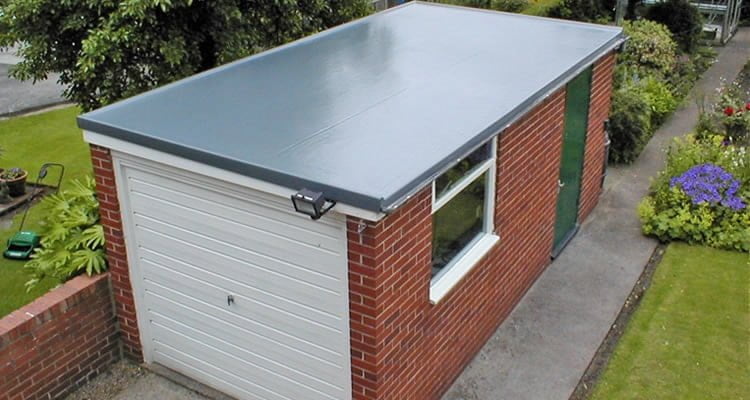Table of Contents
1. Introduction
The roof is the topmost part of any building or structure that protects the interior from heat, rain, snow, etc. Pitch is the slope of the roof and the type of roof which has a pitch of approximately 10 degrees or below is called a flat roof.

Some of the features of the flat roof are:
a. It is one of the most ancient roofs and is mostly used in arid climates.
b. Roof space can be used as a living space.
c. It is also known as a low slope roof.
d. It is one of the widely used roofs all over the world.
e. It is commonly used where there is less rainfall and temperature doesn’t fall below freezing point.
f. It is widely used in countries like UK, India, Nepal, Pakistan, Australia, etc.
g. The longevity of flat roofs is very low i.e. between 6 years to 35 years depending upon the quality of the materials used.
2. Types of Flat Roof
A flat roof can be categorized into three types.
a. Built-Up-Roofing(BUR)
It was the most common type of flat roof system used before the development of modified bitumen and membrane roofing.
It consists of mainly three layers i.e.
1. A bottom layer consisting of an insulation board.
2. Multiple intermediate layers of tar or asphalt alternated with layers of roofing felt.
3. The top layer of gravel protect the tar or asphalt from UV rays and adverse climatic conditions.
Pros of BUR
1. BUR offers high resistivity towards the water, UV rays, and adverse weather.
2. Needs low maintenance cost. It rarely requires maintenance.
3. Easy to remove layers during repairing works.
4. Highly resistive towards normal foot traffic.
5. Attractive for windows and decks that overlook the roof.
6. It is the cheapest of these three varieties.
Cons of BUR
1. It is very heavy.
2. Smelly and messy to install.
3. Slow construction and requires high installation cost.
4. Very difficult to find the source of the leak if leaking occurs.
5. The installation’s not recommended for occupied homes.
6. Clogging of gutters and scuppers may have resulted from gravel.
b. Modified Bitumen Roofing ( MBR)
It was developed in the early 1960 s as a lightweight alternative of Built-Up-Roofing.
It is less smelly and messy to install as compared to BUR.
It is similar to traditional asphalt shingles.
It generally comes in a rolled sheet having a width of 3 feet and a length of 36 feet.
There are two methods of installation of MBR. They are:
a. Torch- Down
This is a conventional method of installation that involves the heating of the backside of the roofing after it is unrolled.
Due to heat; melting of the material (modified bitumen) takes place which results in the adhesion of material with the roof structure.
b. Peel and Stick Fashion
This is a modern method in which self-adhesive modified bitumen is used.
There is no need for heating which makes it safe to install.
Pros of MBR
1. Low installation cost.
2. Offers better flexibility and elasticity at a different temperature, compared to BUR.
3. The homeowner can repair and install self-adhesive roofs easily.
4. More durable than BUR.
Cons of MBR
1. It is not resistive towards tear/scuff.
2. Less attractive than BUR and other membrane roofs with river rock ballast or gravel.
3. The torch-Down method may lead to a fire hazard. So, it is not recommended for occupied buildings.
c. Membrane Roofing ( MR)
It is also called Single-Ply Roofing. There are different roofing materials such as rubber and plastic formulations. Among them; EPDM (ethylene propylene diene monomer), a type of rubber membrane is commonly used.
Membrane roofing consists of an insulation board topped with sheets of EPDM or other material.
EPDM can be mechanically anchored with fasteners, ballasted with stone, or glued.
Pros of MR
1. It is very light and highly resistant to tears or scuff.
2. Easy to patch leaking of water.
3. EPDM reflects heat to make the home cooler.
4. It is cheaper and easy to maintain or repair.
Cons of MR
1. Roof penetrations such as chimneys, HVAC systems, and pipes make it difficult to install and also increases the chance of leakage.
2. It’s also more vulnerable to punctures than other choices.
4. Advantages of Flat Roof
Some advantages of the flat roof are:
a. The roof can be used as a terrace for celebrating functions, playing with children, etc.
b. At any later stage, the roof can be converted into the floor by adding another story.
c. Overhead tanks and other services can be located easily.
5. Disadvantages of Flat Roof
Some disadvantages of the flat roof are:
a. More Leakage problems.
b. They cannot cover large column-free areas.
c. High dead load.
d. More initial cost of construction.
| Read More: Gable Roof |
| Read More: Curing of Concrete |

